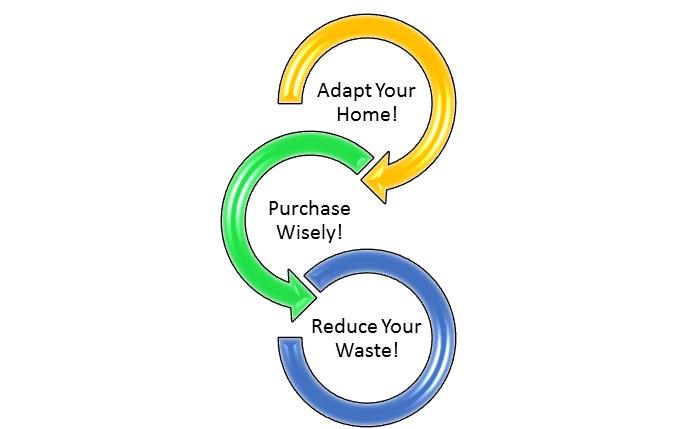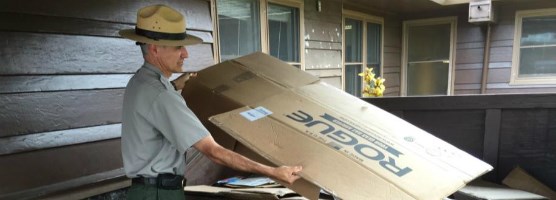You can make a difference in our climate story!
Americans have always been resourceful and creative. We have weathered many storms - both environmental and economic - and have become even stronger as a result. Throughout our country's history, we can see that one person can make positive change and lead others to do the same.
The very preservation of Congaree as a protected area is a testament to the power of many. Our climate future depends on human choices. Many of these choices may seem small at the individual level but when millions of people take action, it really adds up!
While some increased warming is inevitable, our combined actions can help maintain a balanced forest ecosystem and watershed for both environmental and human health.

NPS photo created with SmartArt
Adapt Your Home!
The health of your environment at home has a direct impact on the environment of Congaree National Park.

NPS photo
Chemicals and fertilizers leak into groundwater, impacting our watershed. Polluted waters harm aquatic flora, fauna, and groundwater quality. In turn, this harms animals that feed on insects and fish. It also harms humans who fish and swim in the creeks connected to our river or who drink contaminated groundwater.
To help protect and conserve our waters and all the life that depends on them, treat your lawn as an extension of the national parks:
- Reduce or eliminate the amount of chemicals you use on your lawn to prevent leeching.
- Plant native flowers or create a butterfly garden to encourage pollinators in your community. There are streams, rivers, ponds, lakes - and even oceans - that will benefit from you actions at home. You can also take steps to conserve energy at home. This will reduce your carbon footprint and save you money!
- Purchase power strips for your outlets and make them accessible. After you are done using your electronic devices, turn off the power strip and unplug it. All devices pull energy when they are plugged in, even if the device is turned off. Unplugging the power strip will prevent your electronics from using energy, thus saving you money in the long run.
- Weatherize your home. Investing in proper insulation and sealing gaps and cracks will save you money while helping to heat or cool your home more efficiently.
Purchase Wisely!
As a consumer, you have the power to direct your purchases to companies that are making a difference in our world.

NPS photo
All companies use materials and energy to produce and sell their products to you. Whether you're making a big purchase or a small one, choosing how you spend your hard-earned money can send a strong message to businesses and encourage them to help preserve our planet.
Next time you make a purchase, consider different elements of the product:
- Is it recyclable?
- Is it energy efficient?
- Does it avoid excessive packaging?
Not only will energy efficient products help reduce your carbon footprint, but many of them will save you money in the long run. Investing in present purchases for long-term benefits is the smart thing to do. Make your money count for something!
Reduce Your Waste!
Through reducing the waste you generate and the energy you use at home, you can save money while protecting our environment.

NPS photo
Take action to reduce waste whenever possible:
- Ditch plastic water bottles and buy refillable containers.
- Invest in reusable shopping bags to eliminate the need for plastic bags.
- Buy used clothing rather than purchasing something brand new for twice the price.
- Maintain the items you already have by repairing things like household appliances or clothing.
- Use public transportation, bike, or carpool to reduce the amount of emissions produced from driving solo.
- Recycle everything you can! If you don't have a recycling service available, locate a recycling center in your community and make biweekly or monthly trips to drop of your recyclable waste.
These individual actions can make a real difference in the fight to protect our terrestrial and marine landscapes.
Last updated: August 3, 2015
